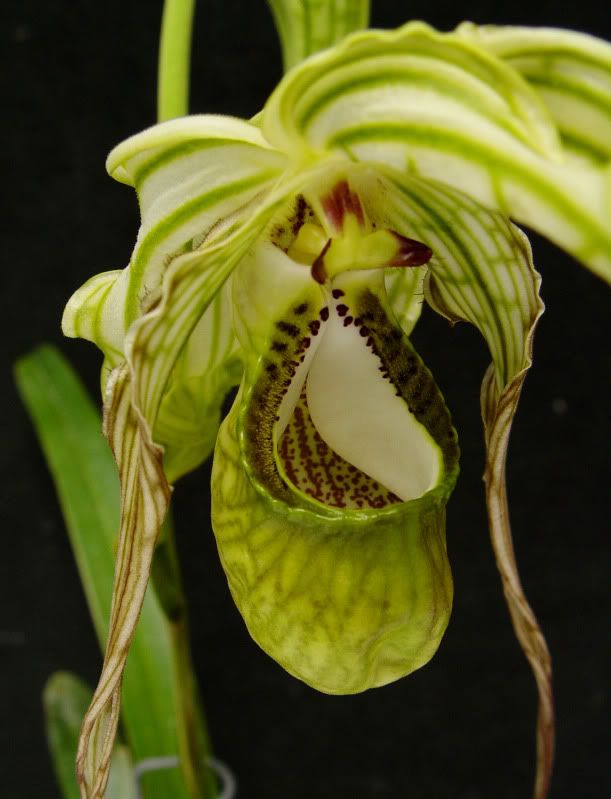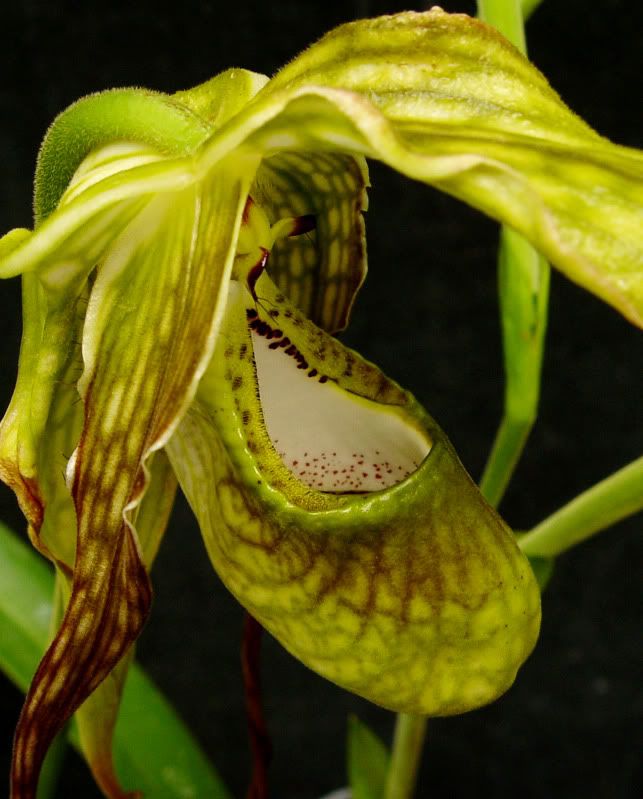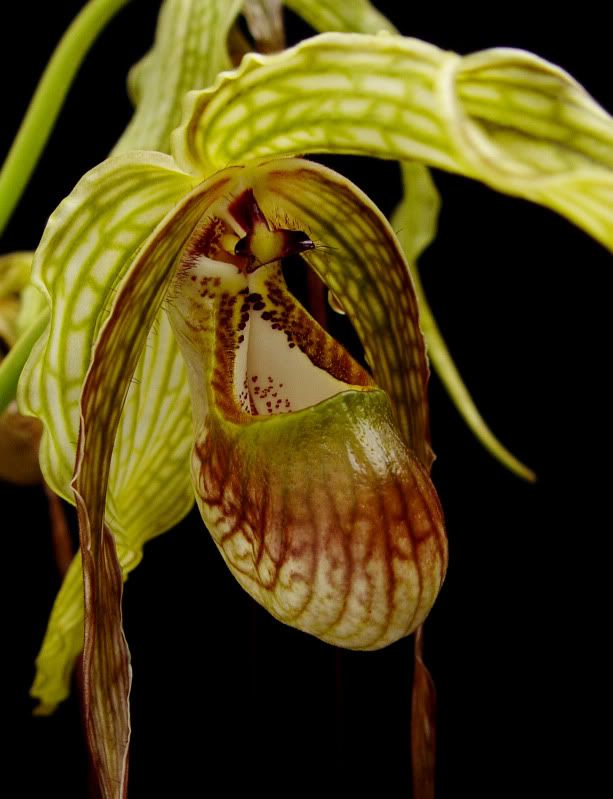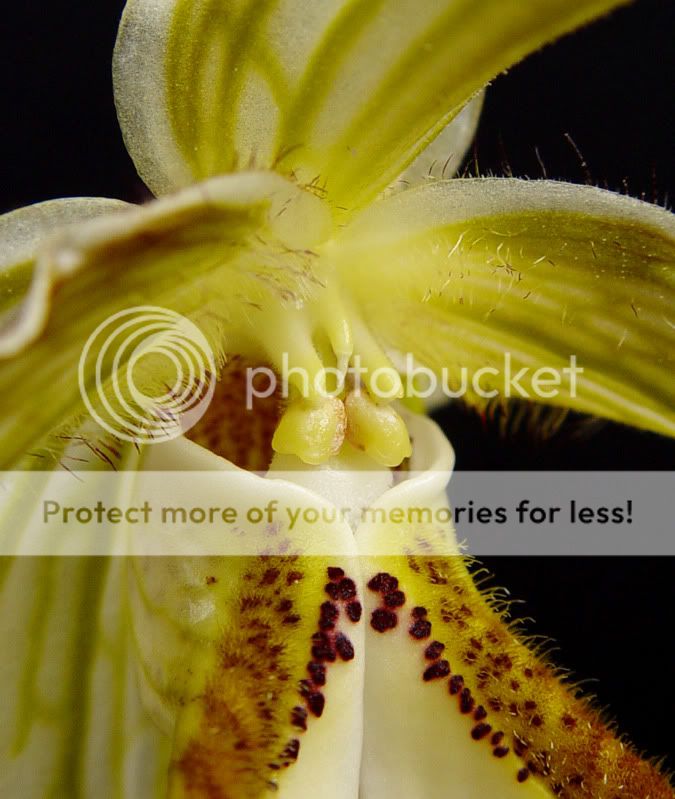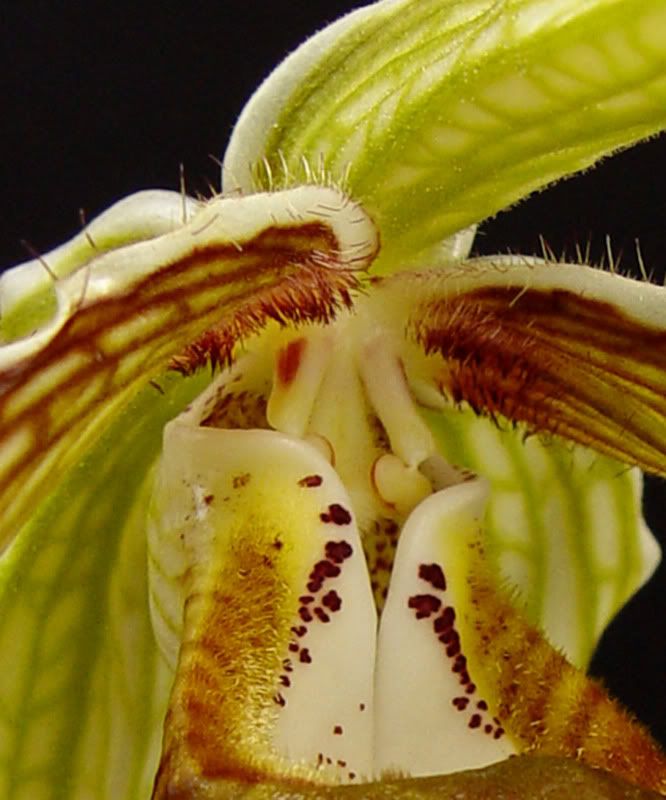D
Drorchid
Guest
In a different post we were having a debate regarding the authenticity of Phrag. exstaminodium, based on a plant of Phrag. exstaminodium 'Gandalf' x self.
Jean-Pierre (and now myself) are questioning the authenticity of the original "Gandalf" clone and think it may be a hybrid between exstaminodium and another Long Petaled Phrag. Rick on the other hand is defending the original "Gandalf" clone, and just thinks it is within the natural variation of the species to be a little different , and does believe it to be the real thing.
Here is some more background info regarding the differences of exstaminodium and popowii:
http://www.slippertalk.com/forum/showthread.php?t=12240
I reposted my latest thread here so we can continue the debate in the Taxonomy section:
I think that as exstaminodium is still so rare in cultivation (Just do a google search; how many pictures of exstaminodium can you find on the internet? and I personally have only seen exstaminodium twice), the chances that many people have made this cross are slim. We just recently got our plants from Dixler himself, who originally made the cross, and it is the first time I have seen them, so thus far I know it has only been made once.
To answer your other question, no I doubt that caudatum was a recessive carrier for the non-staminode trait.
Going back to our 'Gandalf' x self; Here is my take on things: I have the same questions as Jean-Pierre (Phrag-Plus) has, regarding the authenticity of this plant (Is it a true exstaminodium or a hybrid between another long-petaled species). The reason I am saying this, is because like mentioned in a previous post, 'Gandalf' originated in a batch of seedlings that were originally labeled as "wallisii" but when they started blooming they noticed that they were not "wallisii" and because they were lacking staminodes they just assumed they were "exstaminodiums". But who knows for sure what they really are, as having "no staminode" is shown to be dominant, it could very well be a F1 hybrid of wallisii x exstaminodium.
Other clues that make me think that, is becasue when I compare our exstaminodium 'Extraordinary' with the ('Gandalf' x self) seedling the ("Gandalf' x self) seedling has a much smaller and skinnier pouch that looks more "wallisii" like; the pouch is lighter in color, The dorsal sepal is all green and lacks any dark pigments (as our exstamindoum 'Extraordinary' clone did have some brown pigments in the dorsal), the stance of the petals are different. In exstaminodium they are supposed to hang more in-front of the pouch at an angle. In this ('Gandalf' x self) clone they hang more behind the pouch. And the most important thing is that it lacks the little "dents" or "pock marks" on the pouch that differentiates the Central American species (both popowii and exstaminodium) from the South American species (both walllisii and caudatum have smooth pouches).
Just for comparison:
pouch of exstaminodium 'Extraordinary':
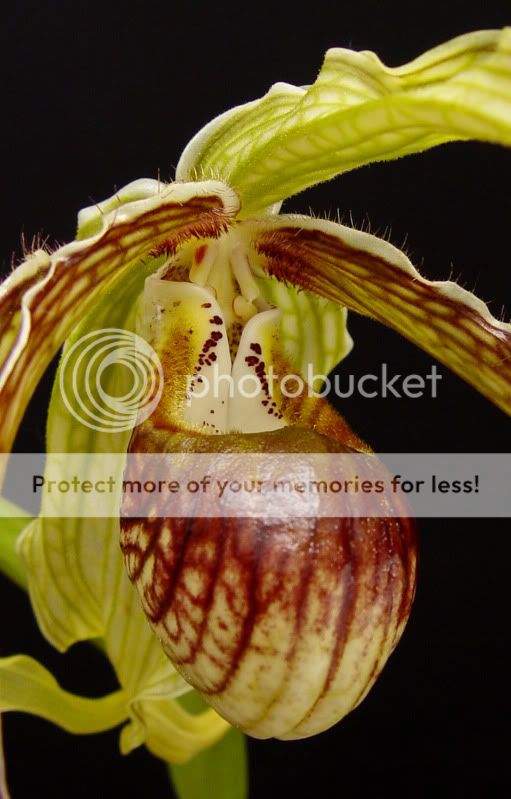
pouch of exstaminodium ('Gandalf' x self):
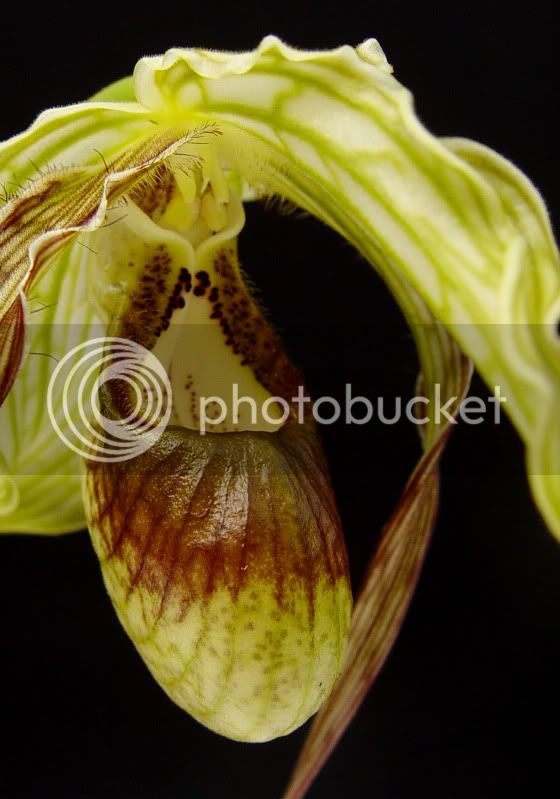
pouch of popowii:
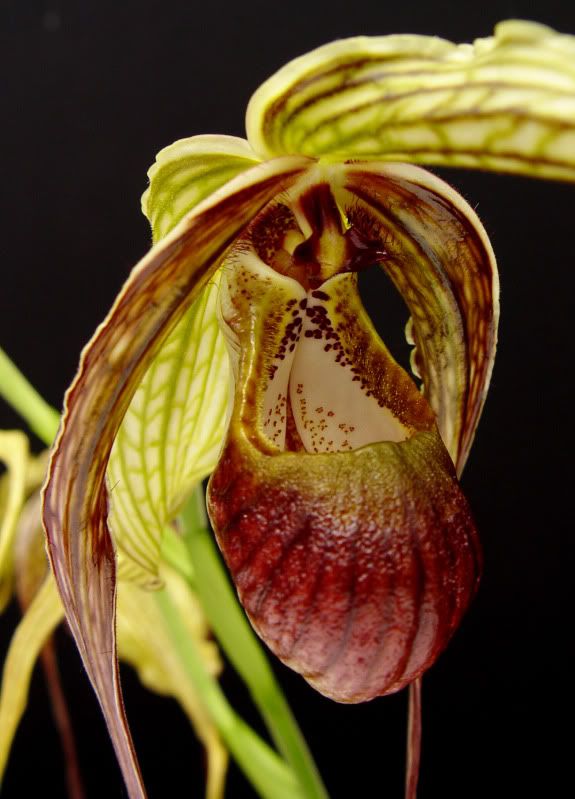
pouch of wallisii:
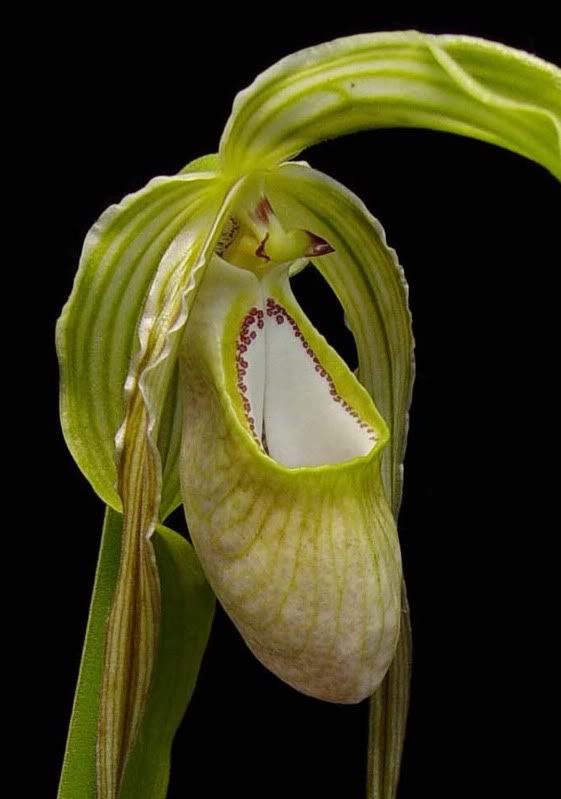
The problem is we never will know for sure (unless we do some DNA analysis) what the true origin is of the 'Gandalf' clone (and its siblings) is. At this point it is just speculation, but myself (based on observation) am leaning towards it being a hybrid.
Jean-Pierre (and now myself) are questioning the authenticity of the original "Gandalf" clone and think it may be a hybrid between exstaminodium and another Long Petaled Phrag. Rick on the other hand is defending the original "Gandalf" clone, and just thinks it is within the natural variation of the species to be a little different , and does believe it to be the real thing.
Here is some more background info regarding the differences of exstaminodium and popowii:
http://www.slippertalk.com/forum/showthread.php?t=12240
I reposted my latest thread here so we can continue the debate in the Taxonomy section:
How often do you think this cross has been made Robert? Do you think this hybrid is now more common than the species in cultivation?
Is it possible that the particular caudatum used for this breeding was a recessive carrier for non-staminode.
Compared to Paphs it seems that Phrags seem to be much more "plastic" about going into self fertilizing mode (lack of a staminode seems to facilitate this in exstaminodium). But given the relative lack of exploration in the rain forest I wonder if we will continue to find scattered populations of different phrag species that have gone into selfing mode.
I think that as exstaminodium is still so rare in cultivation (Just do a google search; how many pictures of exstaminodium can you find on the internet? and I personally have only seen exstaminodium twice), the chances that many people have made this cross are slim. We just recently got our plants from Dixler himself, who originally made the cross, and it is the first time I have seen them, so thus far I know it has only been made once.
To answer your other question, no I doubt that caudatum was a recessive carrier for the non-staminode trait.
Going back to our 'Gandalf' x self; Here is my take on things: I have the same questions as Jean-Pierre (Phrag-Plus) has, regarding the authenticity of this plant (Is it a true exstaminodium or a hybrid between another long-petaled species). The reason I am saying this, is because like mentioned in a previous post, 'Gandalf' originated in a batch of seedlings that were originally labeled as "wallisii" but when they started blooming they noticed that they were not "wallisii" and because they were lacking staminodes they just assumed they were "exstaminodiums". But who knows for sure what they really are, as having "no staminode" is shown to be dominant, it could very well be a F1 hybrid of wallisii x exstaminodium.
Other clues that make me think that, is becasue when I compare our exstaminodium 'Extraordinary' with the ('Gandalf' x self) seedling the ("Gandalf' x self) seedling has a much smaller and skinnier pouch that looks more "wallisii" like; the pouch is lighter in color, The dorsal sepal is all green and lacks any dark pigments (as our exstamindoum 'Extraordinary' clone did have some brown pigments in the dorsal), the stance of the petals are different. In exstaminodium they are supposed to hang more in-front of the pouch at an angle. In this ('Gandalf' x self) clone they hang more behind the pouch. And the most important thing is that it lacks the little "dents" or "pock marks" on the pouch that differentiates the Central American species (both popowii and exstaminodium) from the South American species (both walllisii and caudatum have smooth pouches).
Just for comparison:
pouch of exstaminodium 'Extraordinary':

pouch of exstaminodium ('Gandalf' x self):

pouch of popowii:

pouch of wallisii:

The problem is we never will know for sure (unless we do some DNA analysis) what the true origin is of the 'Gandalf' clone (and its siblings) is. At this point it is just speculation, but myself (based on observation) am leaning towards it being a hybrid.














































